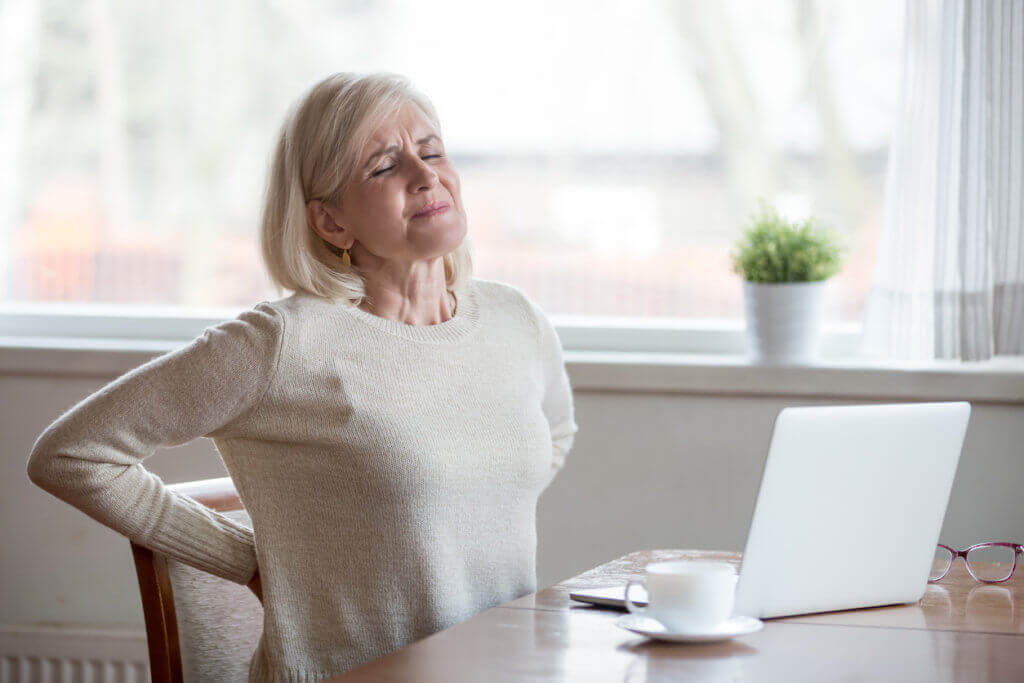What causes osteoporosis and how does it lead to back pain?
One of the leading causes of back pain is due to the fracturing of the vertebrae that make up the spinal column. This results in the space around the spinal column collapsing or compressing, which explains it being referred to as a spinal compression fracture.
Spinal compression fractures can be the result of injuries or trauma. They may also have infections, tumors or cancer as contributing factors. The number one reason for bones becoming weak and more porous, which is the underlying cause of them so readily breaking, is osteoporosis.
What is Osteoporosis?
When you hear the word “osteoporosis”, do you immediately think of an elderly person falling and ending up with a broken hip because of brittle bones? You’re not wrong to make this connection, but the effect that osteoporosis has on the spine is far more widespread than hip fractures. Just in the U.S., there are more than 700,000 fractures of vertebrae in the spine every year.
Often referred to as the “silent disease”, osteoporosis does its damage with few if any red flags being raised. There is no accompanying pain or loss of function. In fact, osteoporosis is a natural part of aging.
Bone is created through a process known as remodeling. Other tissue grows and replaces dead cells through division, with one cell dividing into two. Bone cells, on the other hand, continually break down and new cells are created to take their place. Somewhere around the age of 25, this process begins to peak and then starts going in the other direction due to hormonal changes. No longer is bone produced at the same rate that it is being broken down, which leads to a loss of bone density. When bone mass deteriorates to a critical level, the resulting condition is diagnosed as osteoporosis.
Once osteoporosis has occurred, bone fractures become increasingly more likely. This is true for even those who are exceedingly careful. It may take nothing more than a simple cough or gentle hug to have the result be a fracture. Women are more prone to osteoporosis-related fractures than men, probably due to the extreme drop in hormones during and after menopause, but, for men, there is still a one-in-five chance after they reach 65.
Can Osteoporosis Be Prevented?
Because it is a part of the aging process, we may not be able to prevent osteoporosis, but there are steps that we can take to possibly slow it down. Asking your healthcare professional for advice is always the place to start. Plus, the following are behavioral adjustments that may help strengthen your bones:
- Add more types of vegetables and fruit to your diet
- Consider incorporating probiotics
- Do weight-bearing types of exercise
- Try to consistently get at least seven or eight hours of sleep each night
Osteoporosis may be waiting for all of us down the road, but by making some healthy changes now, we can, hopefully, help to keep our bones stronger for longer. This can only add to our quality of life.
At Long Island Spine Rehabilitation Medicine, our physicians are committed to more than just treating your symptoms. We strongly believe that each individual is best served through an integrative treatment plan. We focus on finding the underlying cause and providing non-surgical, evidenced based solutions tailored to your specific condition and needs. If you are experiencing back pain or have questions about any condition or service, we invite you to schedule a consultation by using our convenient online form by clicking here.
